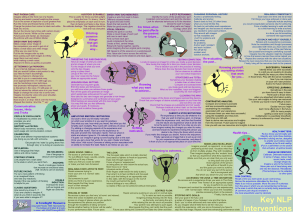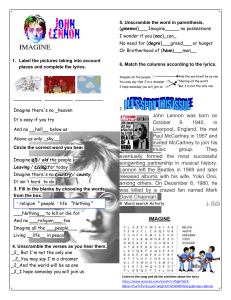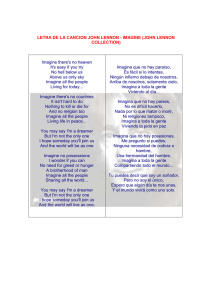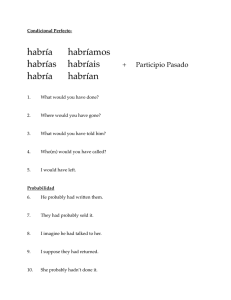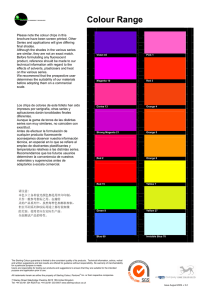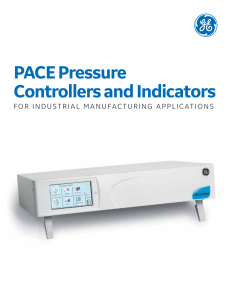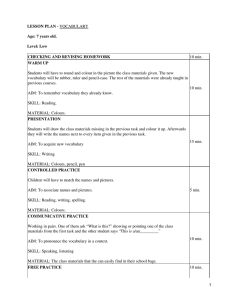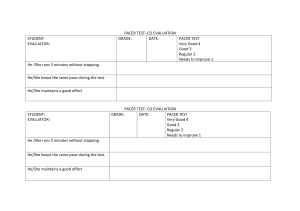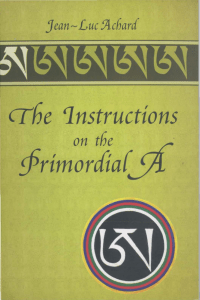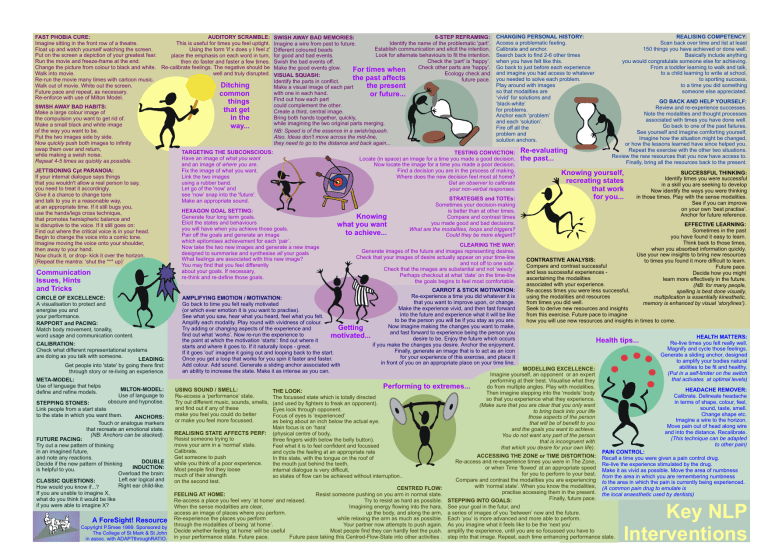
FAST PHOBIA CURE: AUDITORY SCRAMBLE: Imagine sitting in the front row of a theatre. This is useful for times you feel uptight. Float up and watch yourself watching the screen. Using the form 'if x does y I feel z' Put on the screen a depiction of your greatest fear. place the emphasis on each word in turn, Run the movie and freeze-frame at the end. then do faster and faster a few times. Change the picture from colour to black and white. Re-calibrate feelings. The negative should be Walk into movie. well and truly disrupted. Re-run the movie many times with cartoon music. Walk out of movie. White out the screen. Ditching Future pace and repeat, as necessary. common Re-enforce with use of Milton Model. SWISH AWAY BAD HABITS: Make a large colour image of the compulsion you want to get rid of. Make a small black and white image of the way you want to be. Put the two images side by side. Now quickly push both images to infinity swap them over and return, while making a swish noise. Repeat 4-5 times as quickly as possible. JETTISONING Cpt PARANOIA: If your internal dialogue says things that you wouldn't allow a real person to say, you need to treat it accordingly. Give it a chance to change tone and talk to you in a reasonable way, at an appropriate time. If it still bugs you, use the hands/legs cross technique, that promotes hemispheric balance and is disruptive to the voice. If it still goes on: Find out where the critical voice is in your head. Begin to change the voice into a comic tone. Imagine moving the voice onto your shoulder, then away to your hand. Now chuck it, or drop- kick it over the horizon. (Repeat the mantra: ‘shut the *** up)’ Communication Issues, Hints and Tricks CIRCLE OF EXCELLENCE: A visualisation to protect and energise you and your performance. RAPPORT and PACING: Match body movement, tonality, word usage and communication content. CALIBRATION: Check what different representational systems are doing as you talk with someone. LEADING: Get people into 'state' by going there first: through story or re-living an experience. META-MODEL: Use of language that helps define and refine models. MILTON-MODEL: Use of language to obscure and hypnotise. STEPPING STONES: Link people from a start state to the state in which you want them. ANCHORS: Touch or analogue markers that recreate an emotional state. (NB: Anchors can be stacked). FUTURE PACING: Try out a new pattern of thinking in an imagined future, and note any reactions. DOUBLE Decide if the new pattern of thinking INDUCTION: is helpful to you. Overload the brain: Left ear logical and CLASSIC QUESTIONS: Right ear child-like. How would you know if...? If you are unable to imagine X, what do you think it would be like if you were able to imagine X? A ForeSight! Resource Copyright P.Smee 1999. Sponsored by The College of St Mark & St John in assoc. with ADAPTthroughRATIO. things that get in the way... 6-STEP REFRAMING: SWISH AWAY BAD MEMORIES: Identify the name of the problematic 'part'. Imagine a wire from past to future. Establish communication and elicit the intention. Different coloured beads Look for alternate behaviours to fit the intention. for good and bad events. Check the 'part' is 'happy’. Swish the bad events off. Check other parts are 'happy'. Make the good events glow. For times when Ecology check and VISUAL SQUASH: the past affects future pace. Identify the parts in conflict. the present Make a visual image of each part with one in each hand. or future... Find out how each part could complement the other. Create a third, central image. Bring both hands together, quickly, while imagining the two original parts merging. NB: Speed is of the essence in a swish/squash. Also. Ideas don’t move across the mid-line, they need to go to the distance and back again... TARGETING THE SUBCONSCIOUS: Have an image of what you want and an image of where you are. Fix the image of what you want. Link the two images using a rubber band. Let go of the 'now' and see ‘now’ snap into the 'future'. Make an appropriate sound. HEXAGON GOAL SETTING: Generate four long term goals. Elicit the states and behaviours you will have when you achieve those goals. Pair off the goals and generate an image which epitomises achievement for each ‘pair’. Now take the two new images and generate a new image designed to summarise and synthesise all your goals What feelings are associated with this new image? You may find that you feel differently about your goals. If necessary, re-think and re-define those goals. . CHANGING PERSONAL HISTORY: Access a problematic feeling. Calibrate and anchor. Search back to find 2-6 other times when you have felt like this. Go back to just before each experience and imagine you had access to whatever you needed to solve each problem. Play around with images so that modalities are ‘vivid’ for solutions and ‘black-white’ for problems. Anchor each ‘problem’ and each ‘solution’. Fire off all the problem and solution anchors. TESTING CONVICTION: Locate (in space) an image for a time you made a good decision. Now locate the image for a time you made a poor decision. Find a decision you are in the process of making. Where does the new decision feel most at home? Get an observer to calibrate your non-verbal responses. Knowing what you want to achieve... STRATEGIES and TOTEs: Sometimes your decision-making is better than at other times. Compare and contrast times you made good and bad decisions. What are the modalities, loops and triggers? Could they be more elegant? CLEARING THE WAY: Generate images of the future and images representing desires. Check that your images of desire actually appear on your time-line and not off to one side. Check that the images are substantial and not ‘weedy’. Perhaps checkout at what ‘date’ on the time-line the goals begins to feel most comfortable. Re-evaluating the past... REALISING COMPETENCY: Scan back over time and list at least 150 things you have achieved or done well. Basically include anything you would congratulate someone else for achieving. From a toddler learning to walk and talk, to a child learning to write at school, to sporting success, to a time you did something someone else appreciated. GO BACK AND HELP YOURSELF: Review and re-experience successes. Note the modalities and thought processes associated with times you have done well. Go back to one of the past failures. See yourself and imagine comforting yourself, Imagine how the situation might be changed, or how the lessons learned have since helped you. Repeat the exercise with the other two situations. Review the new resources that you now have access to. Finally, bring all the resources back to the present. Knowing yourself, recreating states that work for you... SUCCESSFUL THINKING: Identify times you were successful in a skill you are seeking to develop Now identify the ways you were thinking in those times. Play with the sense modalities. See if you can improve on your own ‘best practise’. Anchor for future reference. EFFECTIVE LEARNING: Sometimes in the past you have found it easy to learn. Think back to those times, when you absorbed information quickly. Use your new insights to bring new resources to times you found it more difficult to learn. Future pace. Decide how you might learn more effectively in the future. (NB: for many people, spelling is best done visually, multiplication is essentially kinesthetic, memory is enhanced by visual ‘storylines’). CONTRASTIVE ANALYSIS: Compare and contrast successful and less successful experiences ascertaining the modalities associated with your experience. Re-access times you were less successful, using the modalities and resources from times you did well. Seek to derive new resources and insights from this exercise. Future pace to imagine how you will use new resources and insights in times to come. CARROT & STICK MOTIVATION: Re-experience a time you did whatever it is AMPLIFYING EMOTION / MOTIVATION: that you want to improve upon, or change. Go back to time you felt really motivated Make the experience vivid, and then fast forward (or which ever emotion it is you want to practise). into the future and experience what it will be like See what you saw, hear what you heard, feel what you felt. to be the person you will be if you stay as you are. Amplify each modality. Play round with vividness of colour. Now imagine making the changes you want to make, Getting Try adding or changing aspects of the experience and and fast forward to experience being the person you find out what ‘works’. Now re-run the experience to motivated... HEALTH MATTERS: desire to be. Enjoy the future which occurs the point at which the motivation ‘starts’: find out where it Health tips... Re-live times you felt really well. if you make the changes you desire. Anchor the enjoyment. starts and where it goes to. If it naturally loops - great. Magnify and cycle those feelings. Finally, generate an image that is to act as an icon If it goes ‘out’ imagine it going out and looping back to the start. Generate a sliding anchor, designed for your experience of this exercise, and place it Once you get a loop that works for you spin it faster and faster. to amplify your bodies natural in front of you on an appropriate place on your time line. Add colour. Add sound. Generate a sliding anchor associated with abilities to be fit and healthy. MODELLING EXCELLENCE: an ability to increase the state. Make it as intense as you can. (Put in a self-limiter on the switch Imagine yourself, an opponent or an expert that activates at optimal levels) performing at their best. Visualise what they do from multiple angles. Play with modalities. Performing to extremes... HEADACHE REMOVER: USING SOUND / SMELL: THE LOOK: Then imagine stepping into the ‘models’ body Calibrate. Delineate headache Re-access a ‘performance’ state. The focussed state which is totally directed so that you experience what they experience. in terms of shape, colour, feel, Try out different music, sounds, smells, (and used by fighters to freak an opponent). (Make sure that you are clear that you only want sound, taste, smell. and find out if any of these Eyes look through opponent. to bring back into your life Change shape etc. make you feel you could do better Focus of eyes is ‘experienced’ those aspects of the person Imagine a wire to the horizon. or make you feel more focussed. as being about an inch below the actual eye. that will be of benefit to you Move pain out of head along wire Main focus is on ‘hara’ and the goals you want to achieve. and into the distance. Recalibrate. REALISING STATE AFFECTS PERF: (physical centre of body, You do not want any part of the person (This technique can be adapted Resist someone trying to three fingers width below the belly button). that is incongruent with to other pain) move your arm in a ‘normal’ state. Feel what it is to feel confident and focussed that which you desire for your own life). Calibrate. and cycle the feeling at an appropriate rate PAIN CONTROL: ACCESSING THE ZONE or TIME DISTORTION: Get someone to push In this state, with the tongue on the roof of Recall a time you were given a pain control drug. Re-access and re-experience times you were in The Zone, Re-live the experience stimulated by the drug. while you think of a poor experience. the mouth just behind the teeth, or when Time ‘flowed’ at an appropriate speed Make it as vivid as possible. Move the area of numbness Most people find they loose internal dialogue is very difficult, for you to perform to your best. from the area in which you are remembering numbness much of their strength so states of flow can be achieved without interruption.. Compare and contrast the modalities you are experiencing to the area in which the pain is currently being experienced. on the second test. with ‘normal state’. When you know the modalities, (A common pain drug to emulate is CENTRED FLOW: practise accessing them in the present. the local anaesthetic used by dentists) FEELING AT HOME: Resist someone pushing on you arm in normal state. Finally, future pace. Re-access a place you feel very ‘at home’ and relaxed. Try to resist as hard as possible. STEPPING INTO GOALS: When the sense modalities are clear, Imagining energy flowing into the hara, access an image of places where you perform. up the body, and along the arm, Re-experience the places you perform while relaxing the arm as much as possible. through the modalities of being ‘at home’. Your partner now attempts to push again. Decide whether feeling ‘at home’ will be useful Most people find they can hardly feel the push. in your performance state. Future pace. Future pace taking this Centred-Flow-State into other activities . See your goal in the futur, and a series of images of you ‘between’ now and the future. Each ‘you’ is more advanced and more able to perform. As you imagine what it feels like to be the ‘next you’ amplify the experience, until you are so focussed you have to step into that image. Repeat, each time enhancing performance state. Key NLP Interventions
